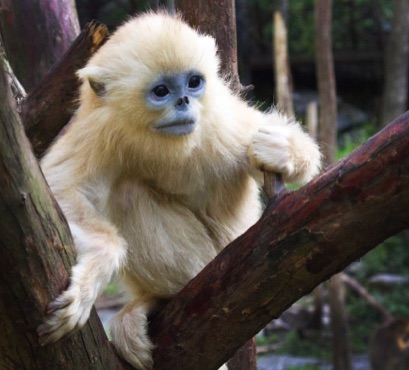The Vulnerable and Endangered Animals of China
2018
The Giant Panda
Please, All images are copyrighted by Jim Edwards and may not be reproduced in any form including the copying or saving of digital files without written permission or a contract from Jim Edwards Wildlife Photography.
Contact e-mail: edwards617@aol.com
We spent 18 days in the Sichuan Province of China to observe several vulnerable and endangered species. The Reserves, National Parks, and Wilderness make up about 1/3 of the land mass of China.
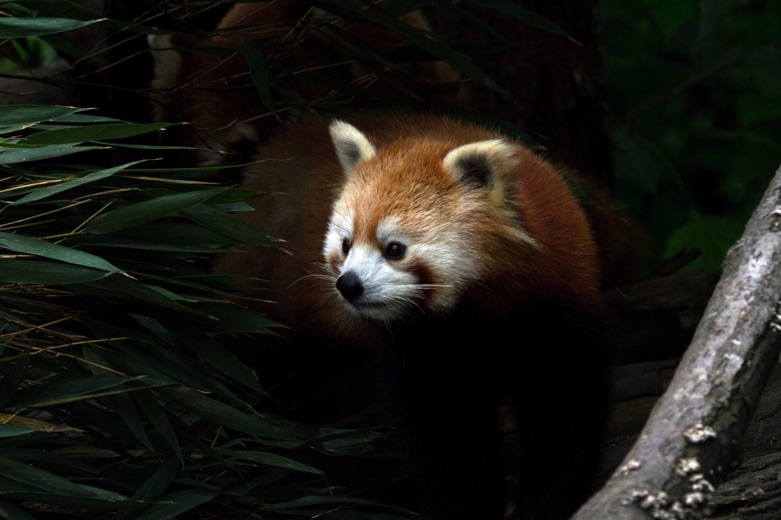
The Red Panda
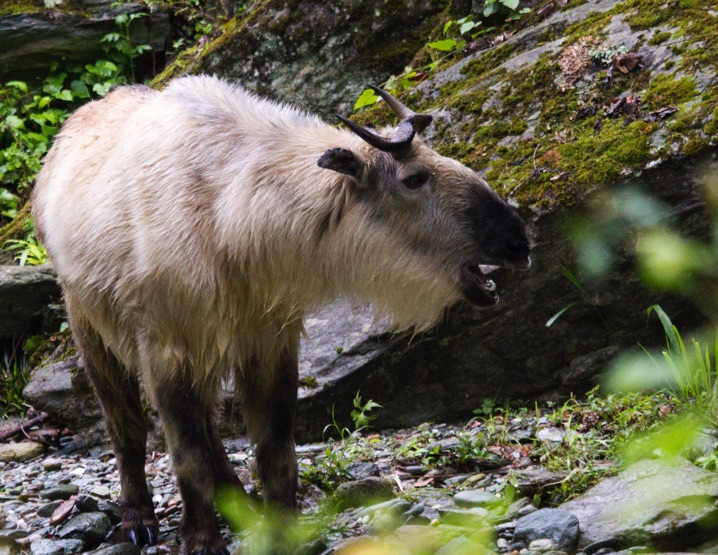
The Takin
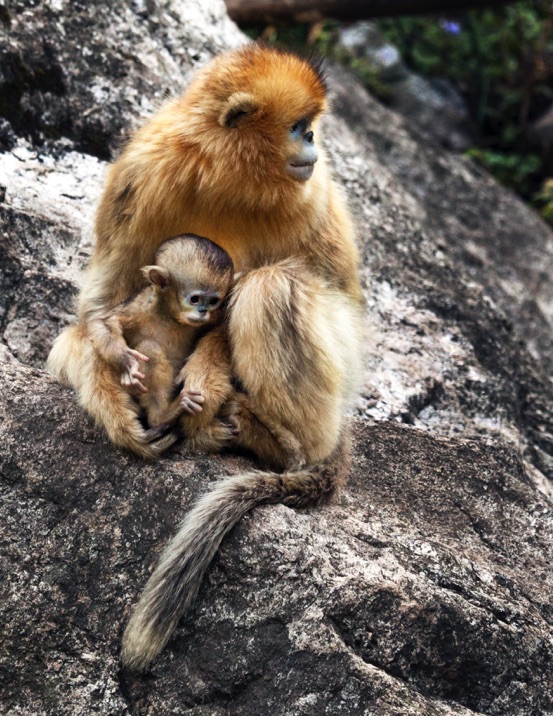
The Snub-nosed Golden Monkey
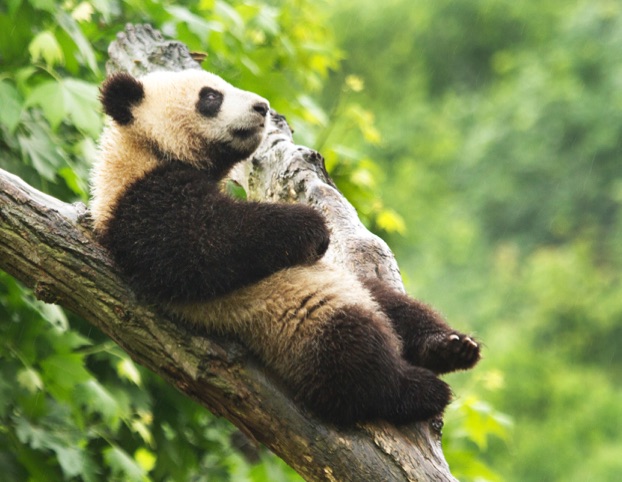
The most recent study showed 1,864 Giant Pandas living in the wild. In addition, 400 live in one the seven reserves & breeding centers that make up the Sichuan Giant Panda Sanctuaries, or those loaned out to Zoos.
There are 18 Zoos in 13 countries that have received Pandas.
The Zoo pays a $1million fee,
1/2 of which is earmarked for further conservation efforts in China. They are on loan for a period of 10 years and any cubs born must be returned after weaning and socialization. This distribution allows for greater genetic diversity in the species.
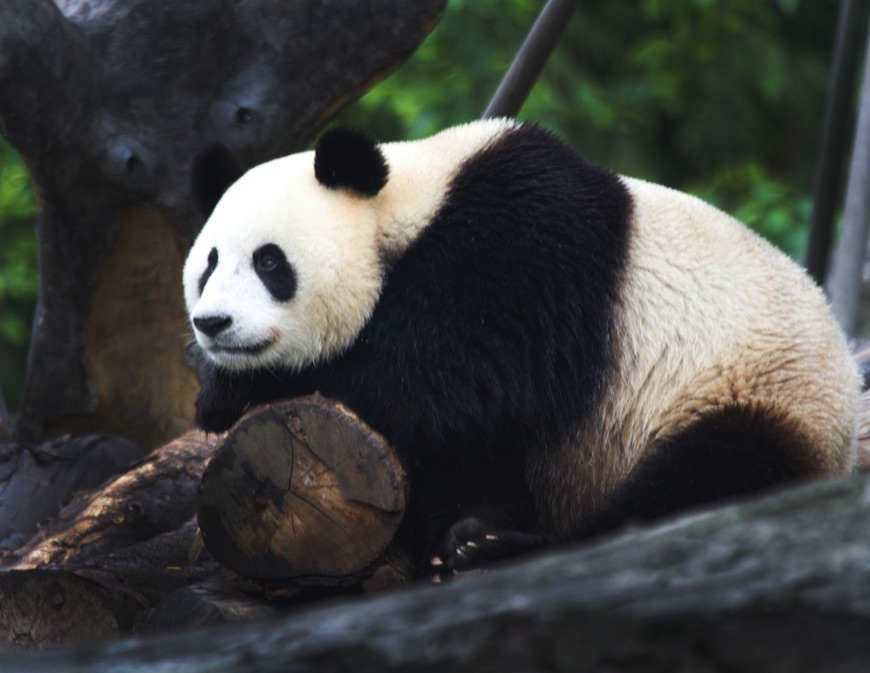
The male Giant Panda can weigh over 300 pounds, females less.
They have a life span of about 20 years in the wild, about 30 years in capitivity.
Due to restoration of habitat and breeding/reintroduction programs that number has risen from an estimated 1000 in the 70's, classifying it now
Vulnerable from Endangered.
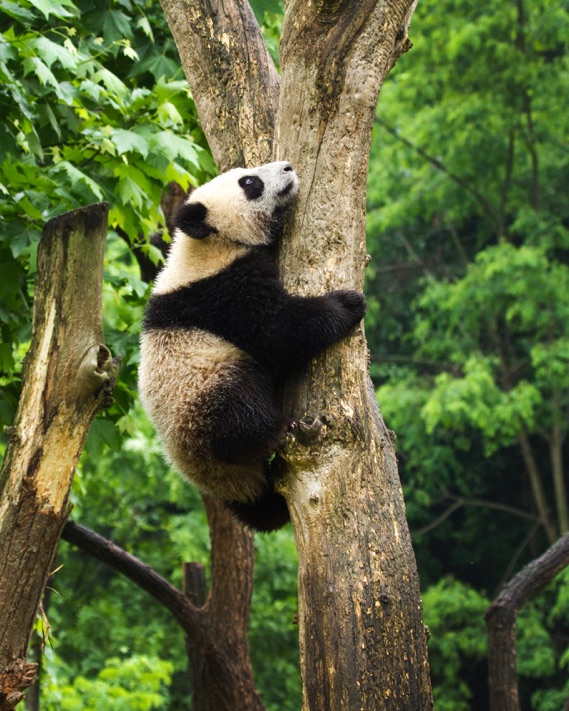
The Panda is adept at climbing trees The mother will put her cub up a tree for protection.
They like to play in trees as well
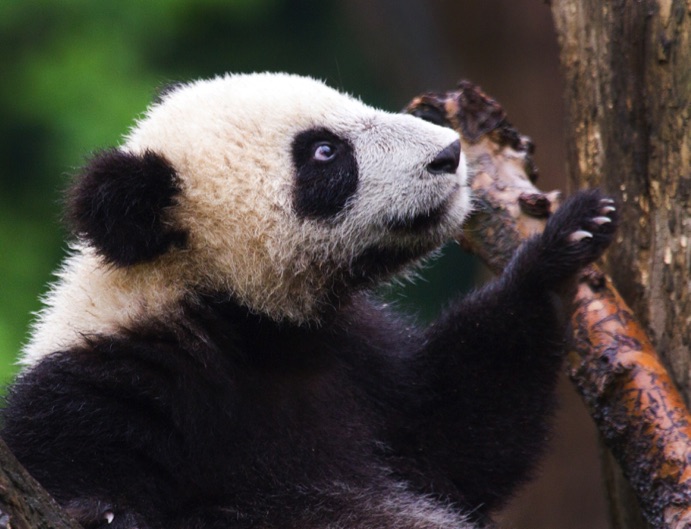
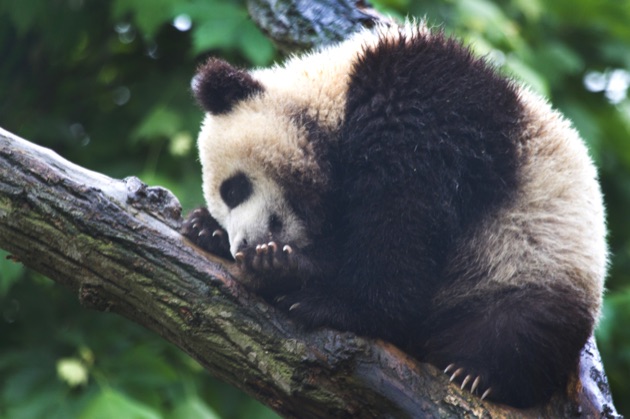
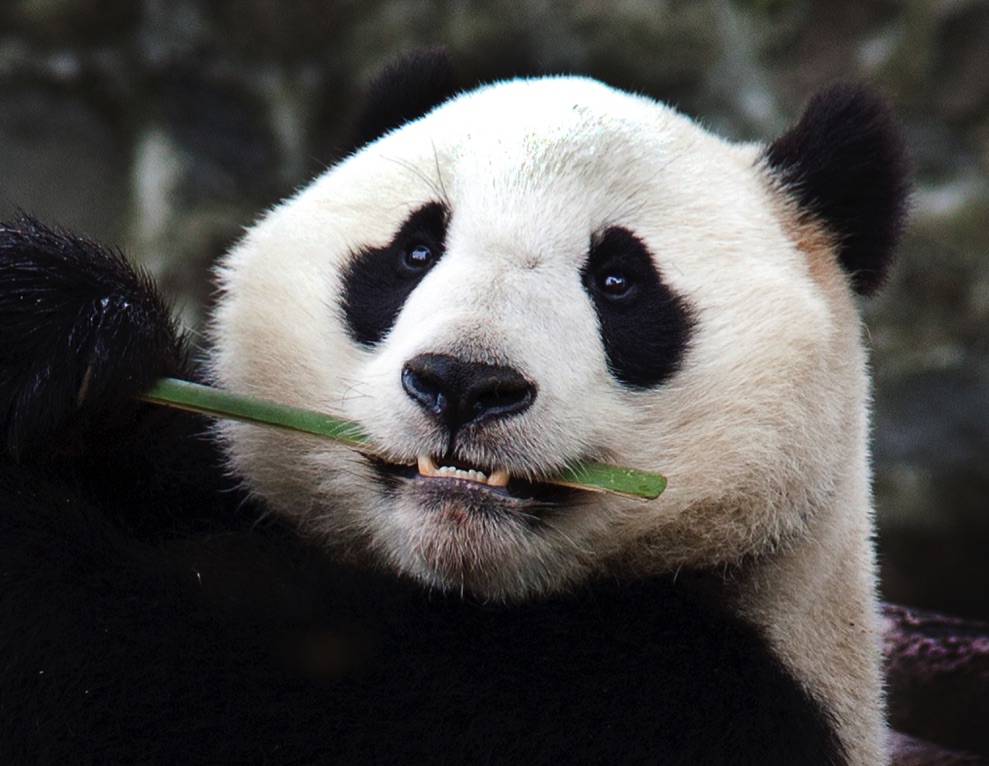
The Red Panda
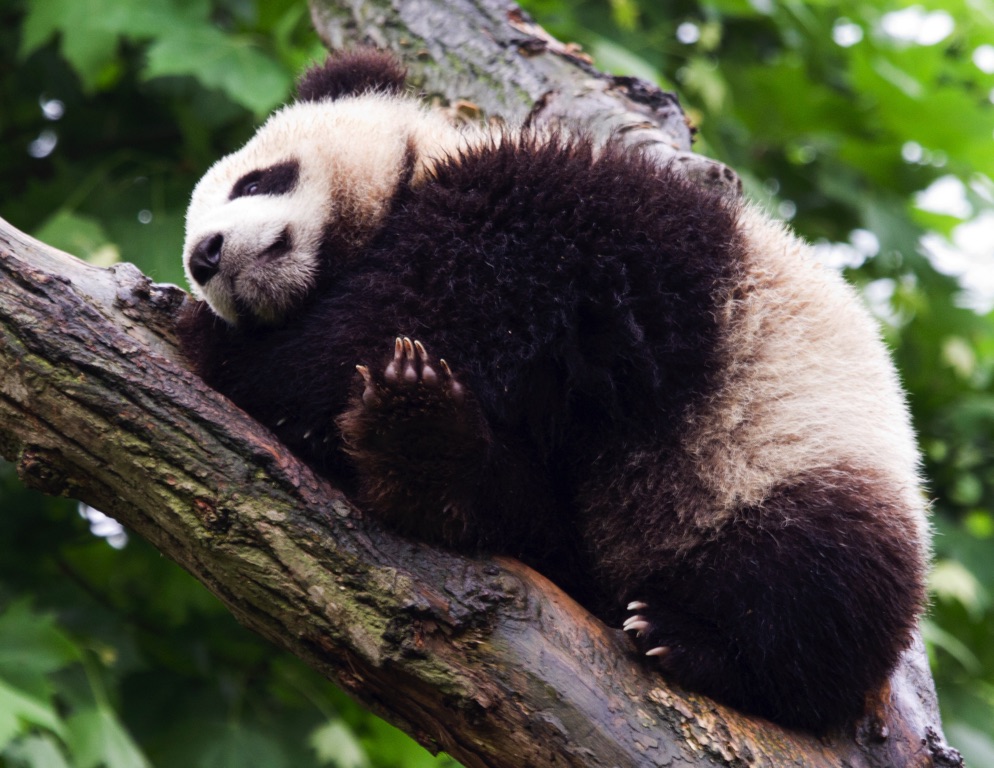
Although the Panda is a carnivore, it's diet is 99% bamboo.The Panda's digestive system is more similar to that of a carnivore than that of a herbivore, and so, much of what is eaten is passed as waste. They must spend 10 to 16 hours foraging and eating with frequent naps. They have to consume 20 to 85 pounds of bamboo each day to sustain themselves.
They have large molar teeth and strong jaw muscles to crush the tough bamboo
The Panda usally eats sitting up, leaving their front paws free to grasp bamboo stems with the help of their "pseudo thumb"
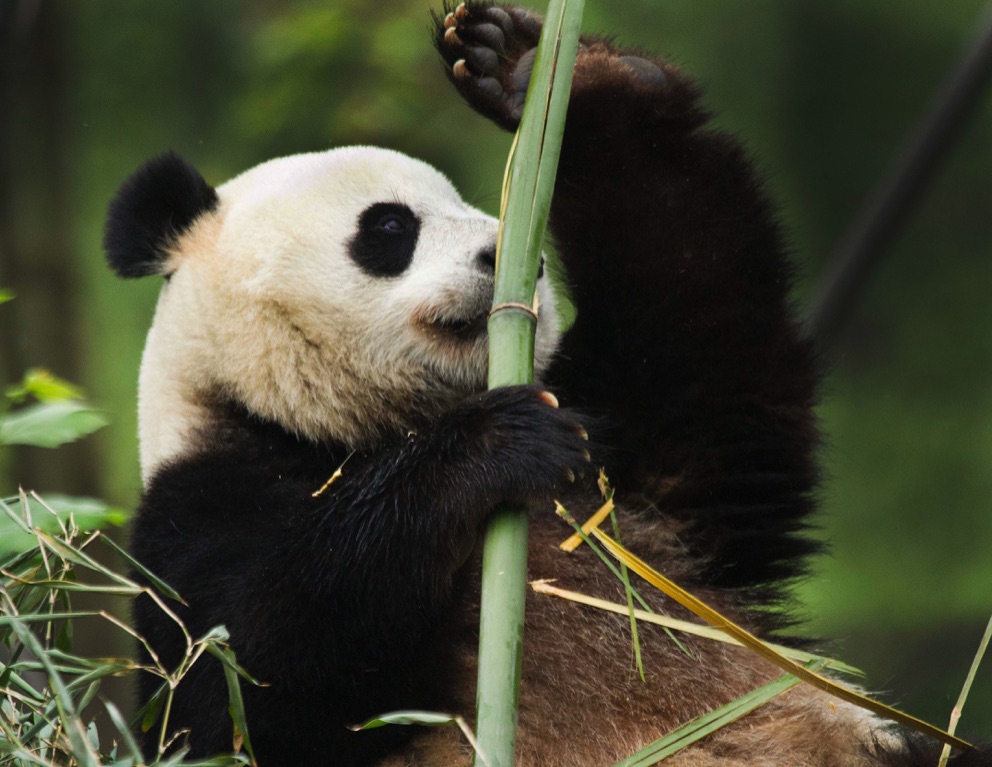
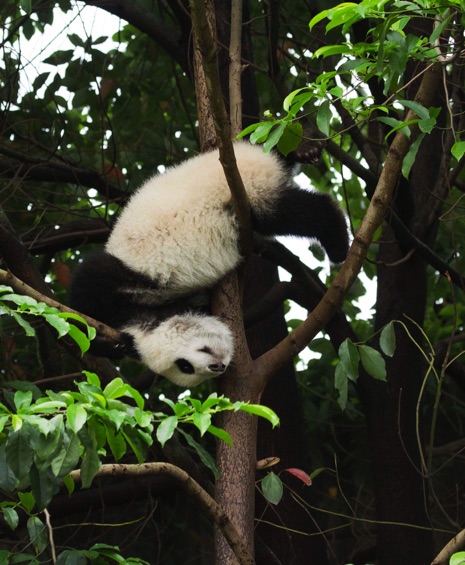
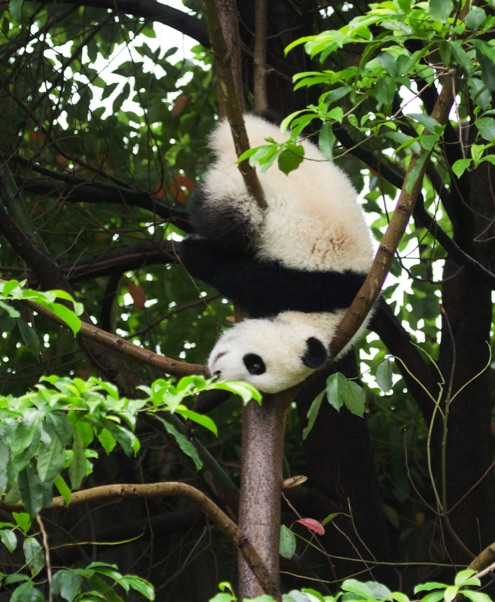
The pseudo thumb is actually an elongated wrist carpal bone in the heal of the palm that allows the claws to close against it and grasp.
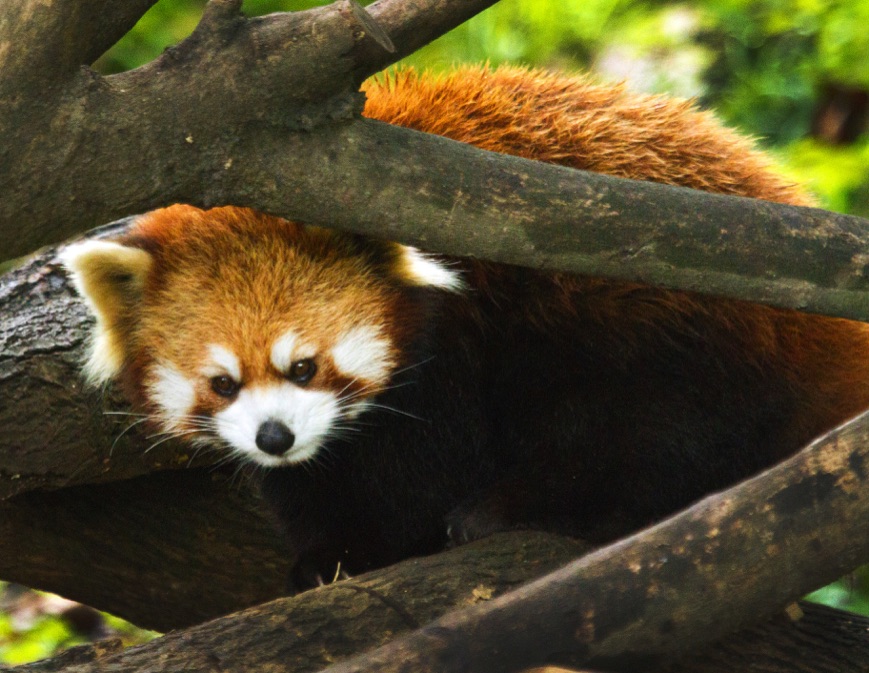
The Red Panda, also known as the lesser panda, the red bear-cat, and the red-cat bear is listed as Endangered Species.
Their wide range includes in the Tibetan Plateau and the Himalayas.
They are not actually Pandas.
The Red Panda hangs out in trees alot (arboreal) and likes to eat plants (a herbivore). His main diet is bamboo, but might go after birds, insects or take eggs.
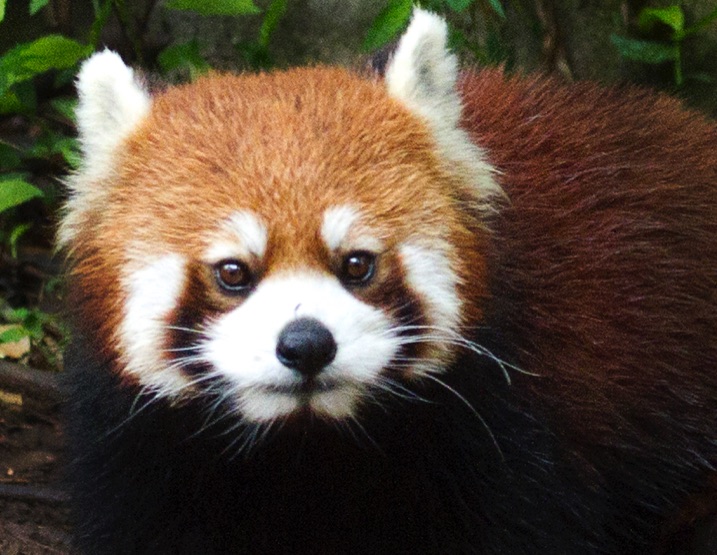
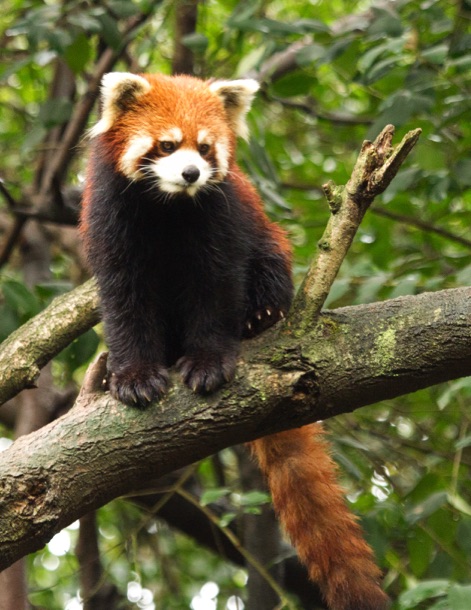
They weigh between 12 and 20 pounds, and have a life span of about 8 years.
They have previously been classified in the racoon family and the bear family. Recently thay've been given their own family name, Ailuridae.
They are solitary and territorial animals except for mothers with young.
As with Giant Pandas, the Red Panda has the digestive system of a carnivore. They don't have that extra fermation chamber like cows and horses have. Much of the bamboo passes undigested.
The Giant Panda is know as an "umbrella species".
The protection of the Panda, restoration of it's habitat, benefits many other species
They have a dark neck and chest probalby for camouflage in the trees and bushes.
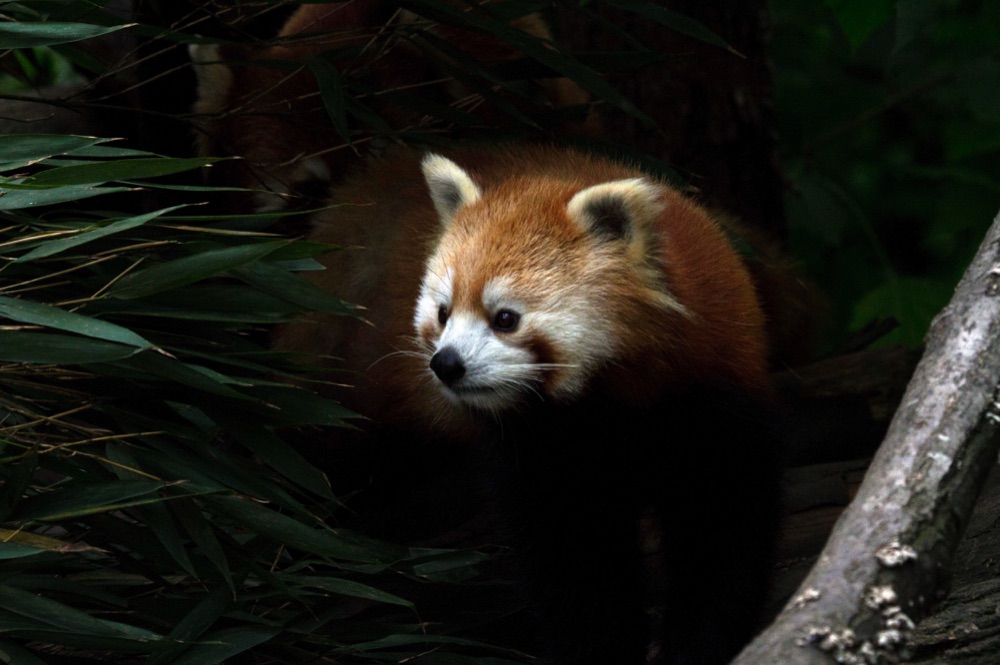
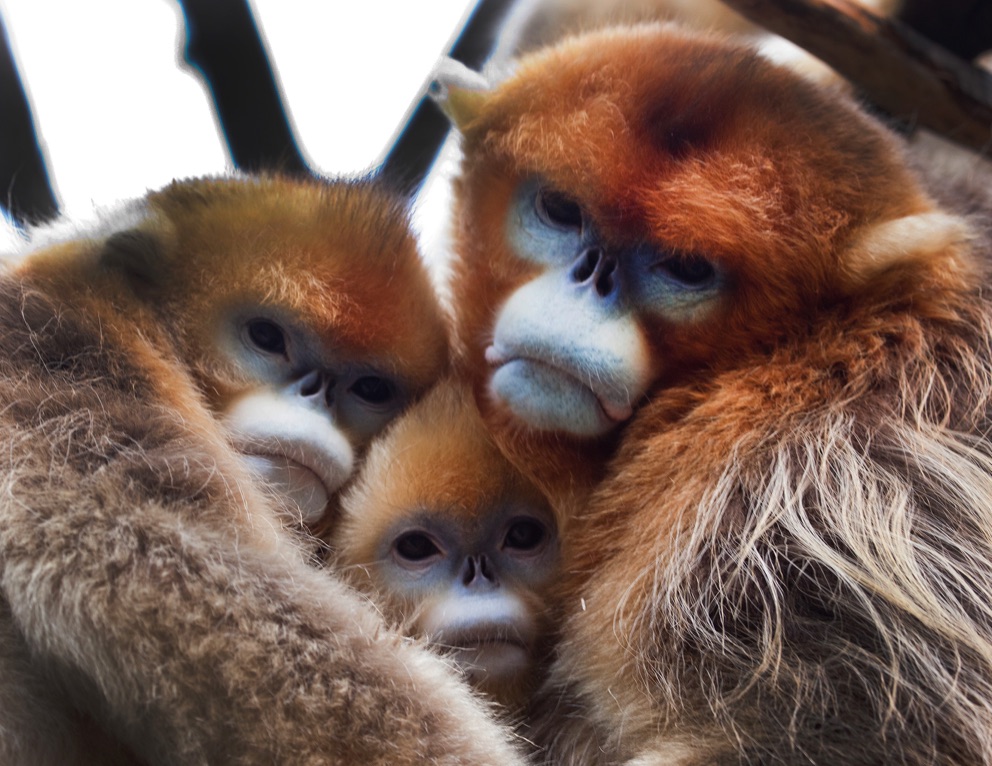
They live at upper elevations and in snow, and they can withstand colder average temperatures than any other non-human primate, up to -25c
The Golden Snub-nosed Monkey
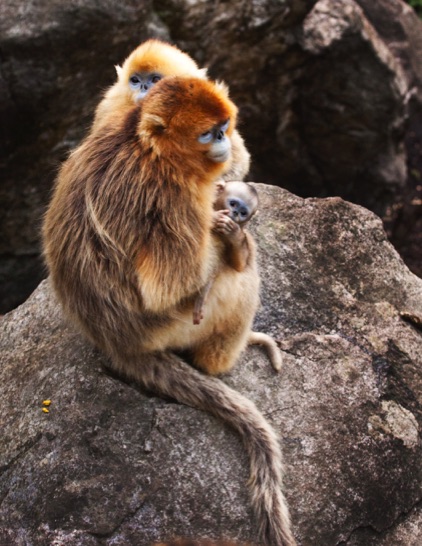
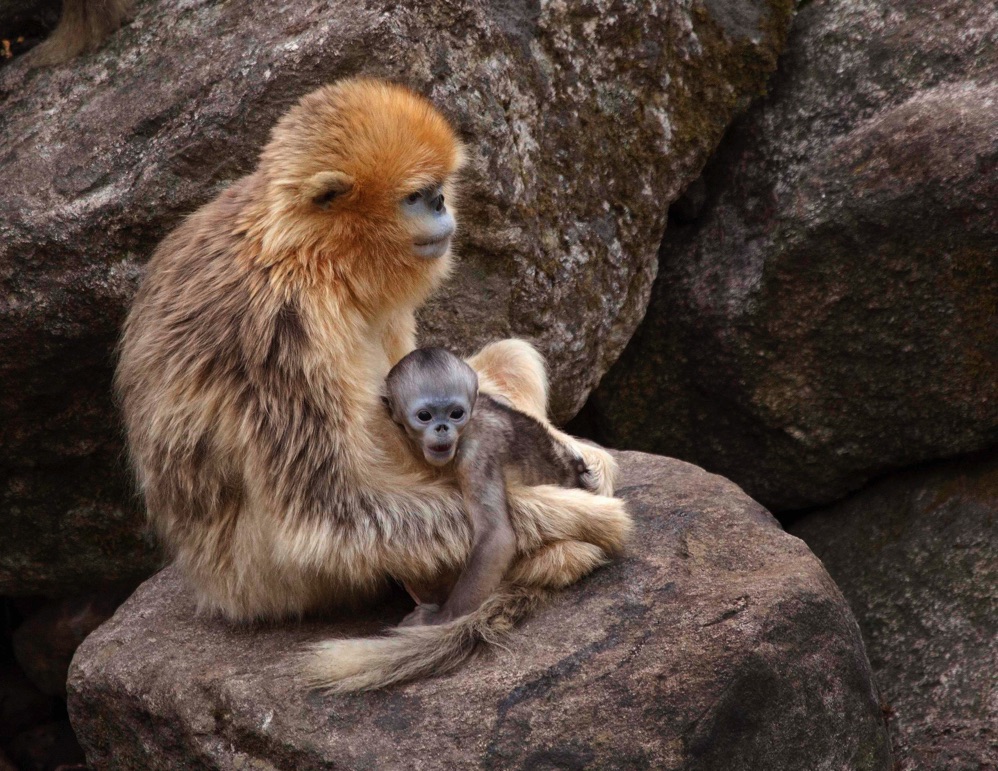
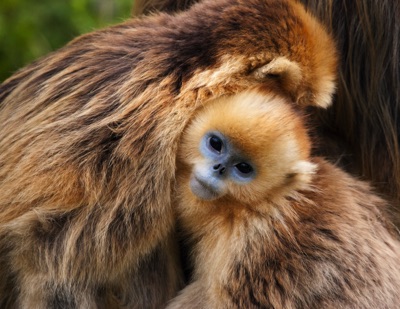
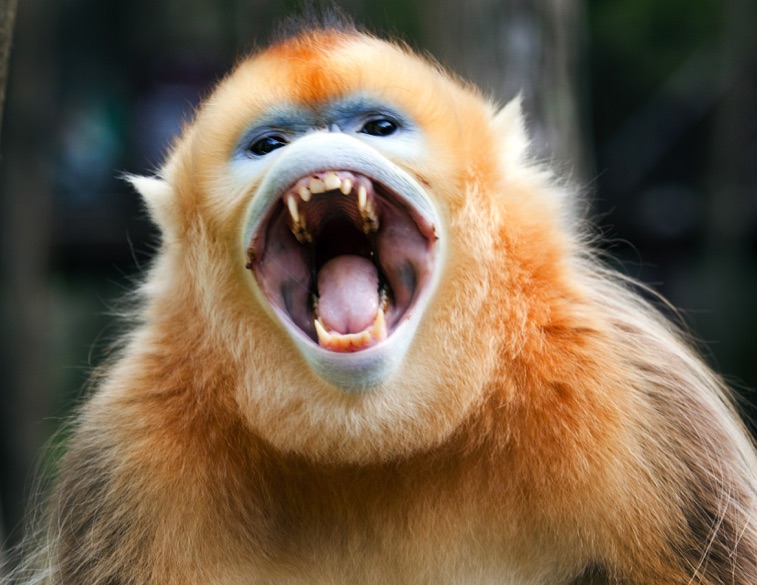
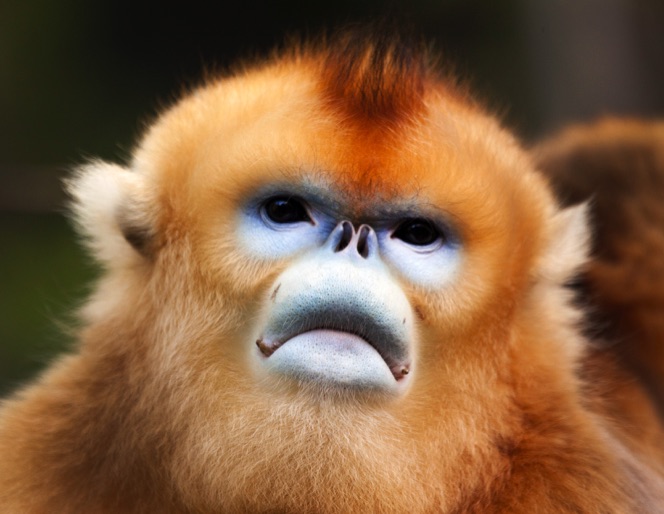
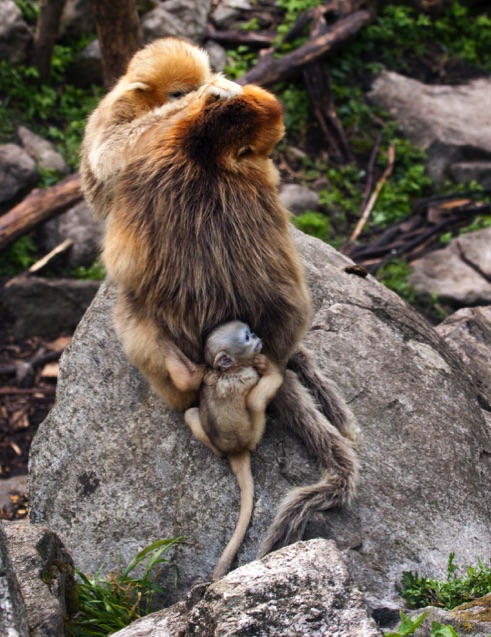
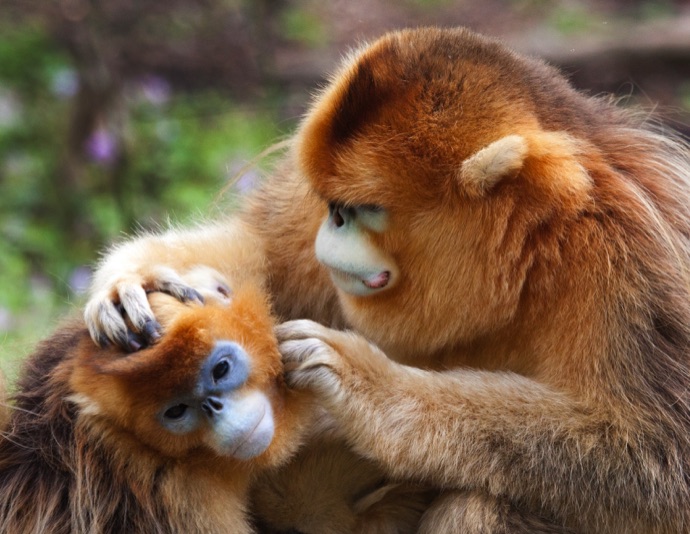
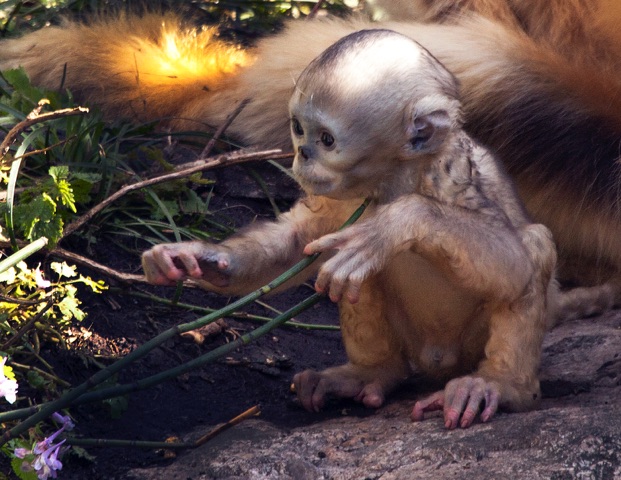
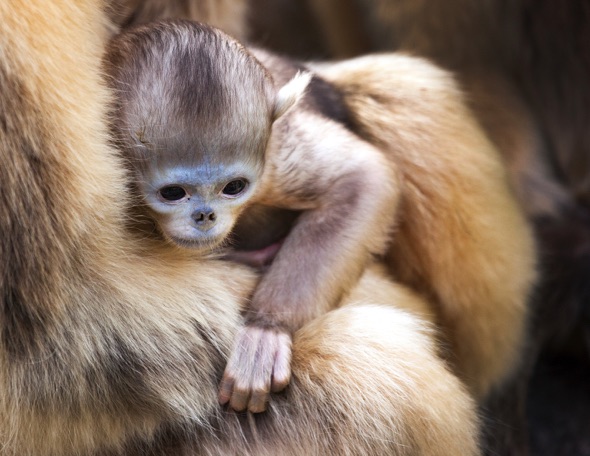
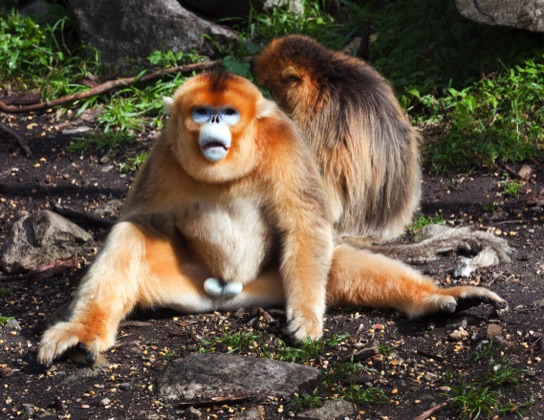
This may be too much information, but the male has a shortage of ejaculate. The females compete for the male and pursue them and flash their genitals at him.
The males are larger than the females and have red protrusions at the edges of the mouth.
These little ones are 2 to 4 weeks old
The troop is broken down into groups with one male and multiple females.
The reason for the name is somewhat obvious.
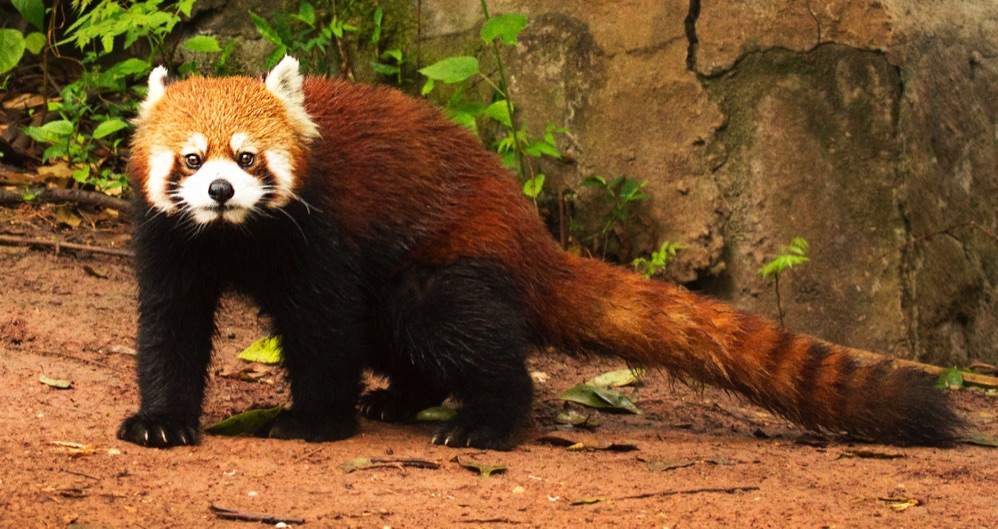
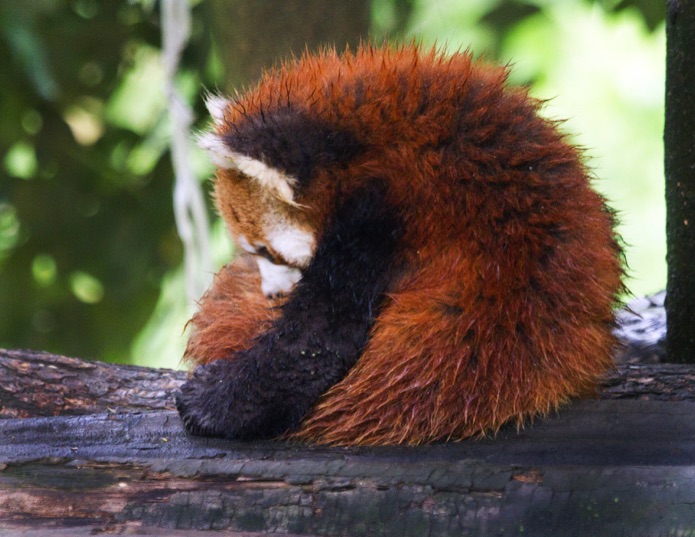
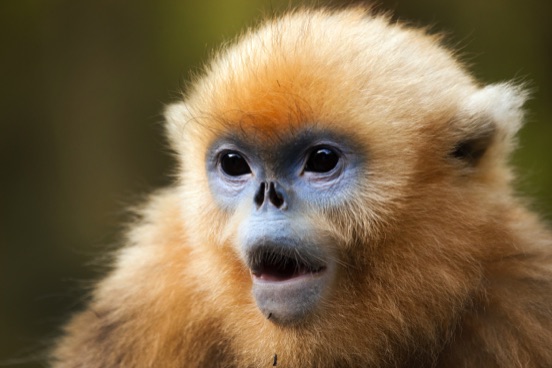
Grooming is an important part of their social interactions.
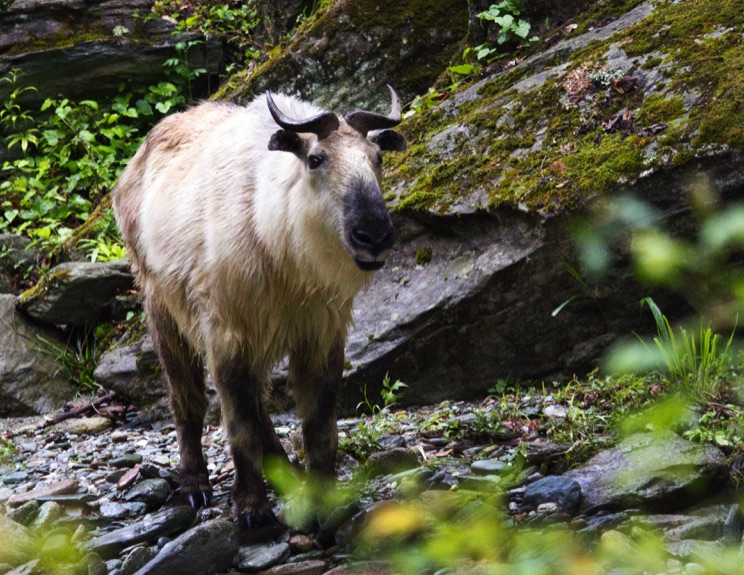
The Takin
Snub-nosed monkeys are among the most endangered primate species in Asia.
They had been hunted for their pelts, and body parts for Chinese medicines. The Reserves in China are helping the population to grow.
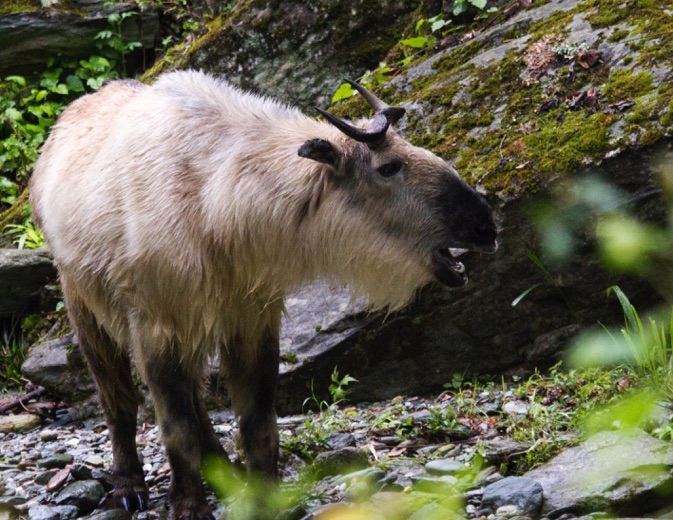
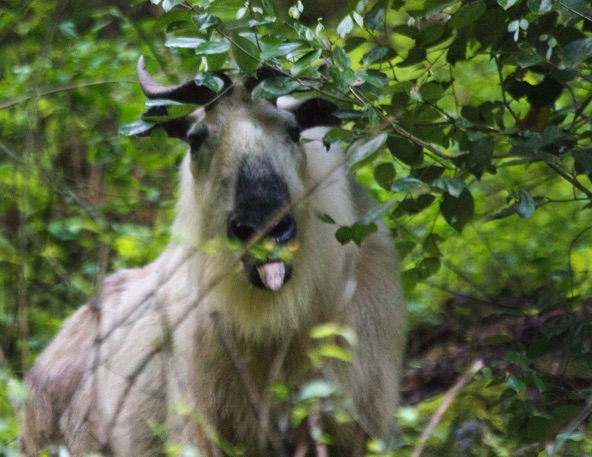
The female comes into esturus only 2 to 7 days a year amd the fertile period only last 8 to 12 hours. The male and female find each other during this short time by their sensitive olfactory sense.
The Giant Panda
The Takin is in the Goat-Antelop family of bovids. They can be found at elevations over 14,000 feet in the Himalayas, and seasonally move up and down the mountains in search of food .
During mating season the males compete for dominance by head to head sparring.
The main predator of the
Takin is man. They are killed for their meat and pelts. They are classified as Vulnerable mainly due to habitat loss.
They live in the same habitat as the Panda. Their diet consist of any vegetation they can find.
The male and other females in the group play a roll in the protection of the young.
The female give birth to one young at a time although twins are rare. The gestation is between 6 to 7 months.
At three months of age the infant turns light brown almost white.

Mirror Lake
The Tibetan Plateau


Eddy Savage, Expedition Leader & Guide
Phillip He, Guide and Interpreter

